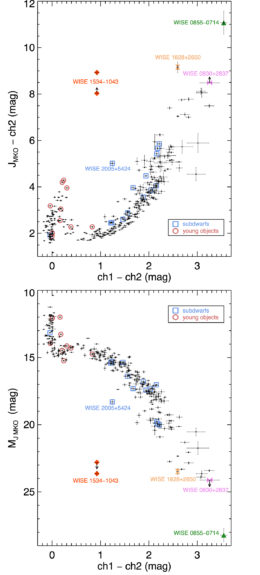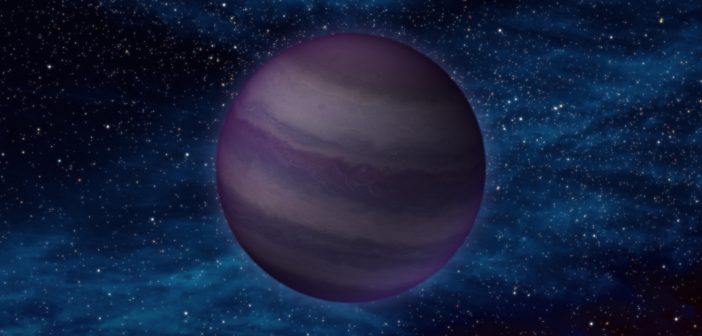It’s human nature to try to categorize the things we observe in the universe. But what happens when something doesn’t fit into the neat categories we’ve established? A new study explores one such object: an especially perplexing brown dwarf.

Brown dwarfs are intermediate in size between the largest planets and the smallest stars. [NASA/JPL-Caltech/UCB]
A Hidden Population
Brown dwarfs — substellar objects that aren’t massive enough to fuse hydrogen in their cores — are an intriguing population. Not quite stars and not quite planets, these objects occupy an uneasy in-between space that’s worth studying further.
But the coldest brown dwarfs — which fall into spectral category Y and have effective temperatures below ~450 K — are a challenging population to study! These chilly objects don’t emit much light, and what little they do radiate is concentrated in the infrared near 5 µm. These objects are therefore difficult to observe from the ground, so we rely on space-based missions to discover the faint light from these objects.
An Accidental Find
Thus far, we’ve managed to detect around 50 of these cold Y dwarfs. To better categorize them, we plot them on color–color and color–magnitude plots to compare their brightnesses at different wavelengths. A recent discovery, however, isn’t behaving as expected.
WISE 1534–1043, nicknamed “The Accident” when it was found serendipitously in a field imaged by the Wide-field Infrared Survey Explorer, is a lone brown dwarf speeding across the sky. An article led by J. Davy Kirkpatrick (Caltech) now presents new, follow-up observations of this puzzling object collected with the Hubble Space Telescope and with the Keck Observatory in Hawaii.
Defying Categorization

Color–color (top) and color–magnitude (bottom) plots exploring WISE 1534–1043’s photometric properties (red data points, plotted using two different models) show that its behavior is unique among known, nearby, cold brown dwarfs. [Adapted from Kirkpatrick et al. 2021]
Measurements of The Accident’s absolute brightness at different wavelengths are all in line with the coldest known Y dwarfs. But its relative colors (as shown by the W1 – W2, ch1 – ch2, and J – ch2 measurements in the plots) and magnitudes fall entirely outside of the range of known brown dwarfs.
Identity Options
What could be the explanation for these enigmatic properties? Kirkpatrick and collaborators use their observations to consider four possible identities for The Accident:
- An extremely low-metallicity, old, cold brown dwarf
- An extremely low-mass, low-gravity, young brown dwarf
- An ejected exoplanet
- An ultracold stellar remnant (like a white dwarf or an exotic ablated stellar core)
Of these options, the authors determine that the first is the most likely. If WISE 1534–1043 is old and remarkably low-metallicity, then the outer layers of its atmosphere would have decreased opacity, allowing us to see deeper into it and potentially explaining the unusual photometric properties. This could mean that The Accident represents the first known Y-type subdwarf — a brand new category of star.
“Verification, refutation, or further befuddlement” should be possible in the future with observations from the upcoming James Webb Space Telescope, suggest the authors. In the meantime, the refusal of objects like The Accident to fit neatly into boxes continues to keep us on our toes!
Citation
“The Enigmatic Brown Dwarf WISEA J153429.75-104303.3 (a.k.a. “The Accident”),” J. Davy Kirkpatrick et al 2021 ApJL 915 L6. doi:10.3847/2041-8213/ac0437
